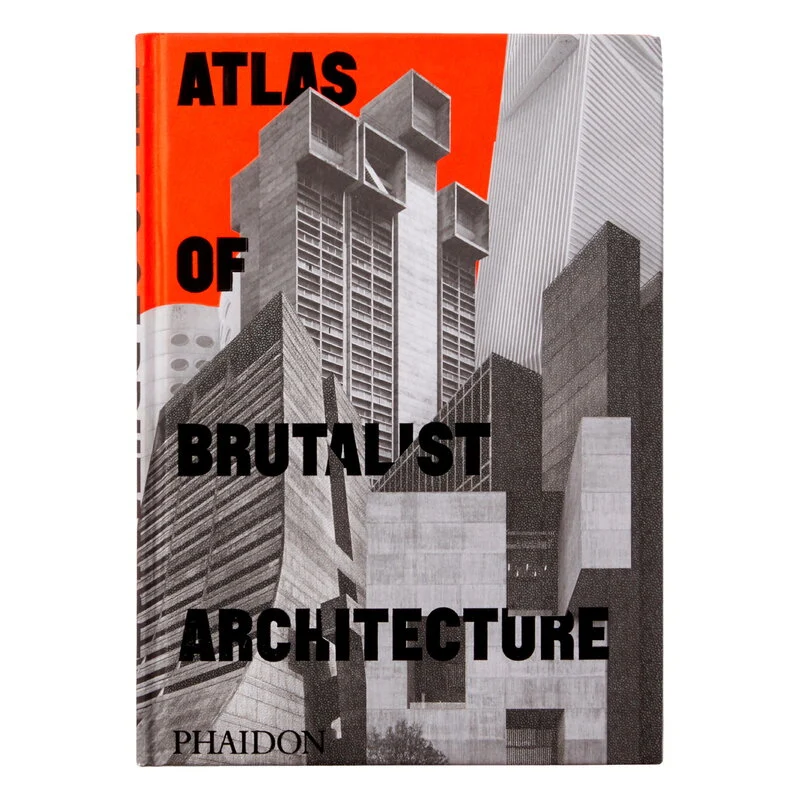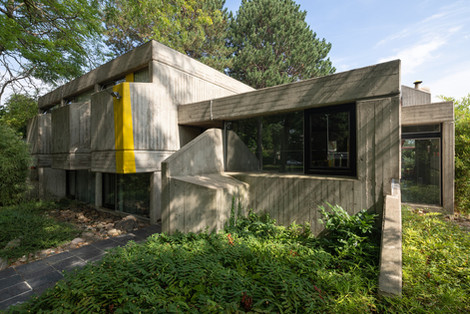Brutalism, the 'Bunker' in Geleen and 'The Brutalist' Film
- willkohlen
- 30 dec 2024
- 5 minuten om te lezen
Bijgewerkt op: 6 feb
Brutalism
Brutalism is an architectural style that has seen a resurgence in recent years. Once criticized for its austere, sometimes harsh, and intimidating appearance, it is now increasingly appreciated for its distinctive character and artistic value in a world that often feels increasingly homogenous. This shift in perception has been partly driven by social media and the growing enthusiasm from architecture aficionados, as well as architects who appreciate the style's boldness and raw aesthetic. In countries like the Netherlands, books like Bruut. Atlas van het brutalisme in Nederland have documented the style's significance, and online forums on platforms such as Facebook and Instagram now regularly feature these iconic and often 'misunderstood' buildings.
The term "brutalism" comes from the French béton brut, meaning "raw concrete," and is most closely associated with architects like Le Corbusier, who championed its use. Though it emerged in the mid-20th century, brutalism became internationally recognized, with examples appearing throughout Western Europe, Eastern Europe, and beyond, lasting into the 1980s.
An important aspect of brutalism's renewed popularity is its portrayal in film and video games. Movies like A Clockwork Orange, The Big Lebowski, and Blade Runner 2049 have integrated brutalist architecture into their settings, making it an integral part of the atmosphere. For instance, in Stanley Kubrick's A Clockwork Orange (1971), the stark brutalist buildings of the Thamesmead district in London embody the dystopian, oppressive society at the film's core.
Likewise, in Blade Runner 2049 (2017), Denis Villeneuve uses brutalism to help create a future world that feels cold, isolating, and mechanistic, further amplifying the themes of existential questioning and alienation explored in the film. These films demonstrate how architecture can transcend aesthetics, playing a pivotal role in reinforcing the narrative and emotional undertones of a story.
The 'Bunker' in Geleen
In 1975, one of the more unusual examples of brutalist architecture appeared in the Dutch town of Geleen. The house, designed for the Parpart family, stood out for its daring use of concrete and its unique, bunker-like appearance. Located on a quiet street lined with more traditional, well-maintained villas, the house had a striking, almost fortress-like quality. With a low entrance block surrounded by greenery, the design seemed a bold departure from the conventional, showcasing the elegance and refinement of concrete in ways not typically seen in residential homes.
The Parparts' house had smooth, clean lines and an almost animalistic form, with a fresh, raw concrete "skin." The design also featured dramatic touches such as a wide yellow paint stripe on the front facade and distinctive beveled extensions, which lent the building a sense of depth. Despite its utilitarian material, the house was not dark or unwelcoming. The Parparts themselves argued that visitors often found the concrete structure to be surprisingly warm and inviting.
While local residents initially called the house "the bunker" or "the crematorium" due to its starkness, the Parparts never intended to build a brutalist house—rather, they simply wanted to create something beautiful. Their choice of concrete and collaboration with German architect Wolfgang Grundhoff, who had little prior experience with the material, resulted in a bold and innovative design that defied expectations. The house has been included in the top 20 of the Bruut. Atlas van het brutalisme in Nederland, affirming its place in the architectural history of the Netherlands.
'The Brutalist ' film & James Bond
The recent film The Brutalist, directed by Brady Cobet, explores the life of Laszlo Toth (played by Adrien Brody), a Hungarian architect who fled the Soviet threat after surviving concentration camps. Upon arriving in the United States, Toth finds work as an architect and is tasked with redesigning a library for a wealthy client in Philadelphia. Toth's sleek, modernist design proves to be a bold departure from the period's typical architecture, showcasing the potential for innovation in the midst of personal and professional turmoil.
The Brutalist has received critical acclaim, winning the prestigious Golden Lion at the Venice International Film Festival. The film not only examines Toth’s career but also reflects on the challenges and sacrifices he made while trying to bring his architectural vision to life in a world that was often hostile to his ideas.

Interestingly, the film’s protagonist, Laszlo Toth, has some similarities with a real-life architect—Erno Goldfinger—whom Fleming used as inspiration for his famous Bond villain, Auric Goldfinger. Ian Fleming, the creator of James Bond, reportedly borrowed the name from the real-life modernist architect Erno Goldfinger, who designed the notorious Trellick Tower and Balfron Tower in London. Much like the Bond villain, Erno Goldfinger was an enigmatic and somewhat dour figure with little regard for social niceties. His work in the brutalist style, especially in creating high-rise social housing, remains controversial to this day.
However, although the architect's work was controversial and often derided, it met the need for affordable social housing in London in the years following World War II. Goldfinger, a staunch Marxist, translated his utopian principles into designs for high-rise social housing, such as the famous Balfron Tower. Goldfinger himself was very pleased with the design and did something that architects should perhaps do more often; he moved into the 25th-floor flat for two months in 1968 and, with his wife, organised champagne parties there to find out what the residents liked and disliked about his design. He applied these experiences to his next design, the similar and better-knowne Trellick Tower in West London. Goldfinger later added Glenkerry House to the complex with the Balfron Tower in the same brutalist style.

Fleming’s choice of Goldfinger’s name for his villain—who was depicted as a foreigner with little social grace - was not coincidental. The similarities between the architect's life and the character’s actions are striking, illustrating how real-life figures can leave an indelible mark on fiction. Goldfinger himself was not pleased to be associated with a villain but later accepted Fleming’s offer of free books in compensation.
Both The Brutalist and the connection between Erno Goldfinger and James Bond demonstrate how brutalism, and the figures who built it, continue to inspire both real-world architecture and fictional narratives. Whether through the building of daring concrete structures or through the creation of memorable cinematic characters, brutalism’s influence persists in surprising and fascinating ways.
This article explores how the perception of brutalism has shifted, how its aesthetic has permeated popular culture, and how architectural figures—real and fictional—have impacted the world of film and storytelling.
Sources: www.oostblog.info - Zout Magazine - Bouwplaten - Lecture on Book:Bruut. Atlas van het brutalisme in Nederland - Brutalism in Game: ‘Control’ - Brutalism in Films - Glenkerry House - Balfron Tower - Wikipedia & A.I. & more











































Opmerkingen